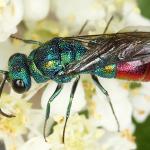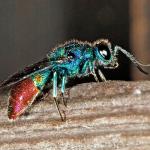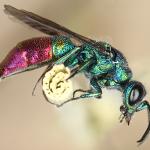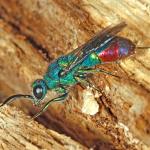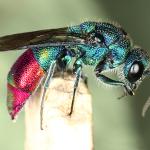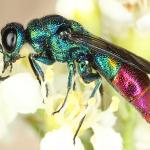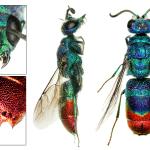Distinguished from other Chrysis species in having four distinct acute teeth on the posterior margin of the third gastral tergum, and the first gastral tergite is blue-black. Identification keys are given in Morgan (1984). Information concerning general biology is given by Kunz (1994).
South Devon to east Kent, north to Worcestershire and Cambridgeshire. Records from 1970 onwards are from several localities in west and north-west Surrey, and north-east Hampshire.
Overseas found in Europe, and eastwards to central Asia.
Shirt (1987) and Falk (1991) listed this species as endangered (RDB1). Recent survey work would suggest that its status should be reviewed.
This wasp is associated with scrubby heathland and open woodland where its hosts are found in the vicinity of aspen and creeping willow.
British records agree with the flight period June to mid-August, as stated by Kunz (1994).
No information available.


